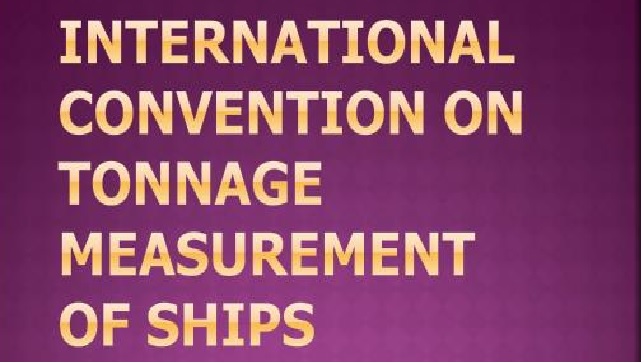International Convention on Tonnage Measurement of Ships, 1969
Adoption: 23 June 1969
Entry into force: 18 July 1982
Introduction and history
The Convention, which was adopted by IMO in 1969, was the first successful attempt to introduce a universal tonnage measurement system. Previously, various systems were used to calculate the tonnage of merchant ships. Although all went back to the method devised by George Moorsom of the British Board of Trade in 1854, there were considerable differences between them and it was recognized that there was a great need for one single international system. The 1969 Tonnage Measurement Convention provides for gross and net tonnages, both of which are calculated independently. The gross tonnage is a function of the moulded volume of all enclosed spaces of the ship. The net tonnage is produced by a formula which is a function of the moulded volume of all cargo spaces of the ship. The net tonnage shall not be taken as less than 30 per cent of the gross tonnage.
There is only one net tonnage and its change is allowed only once a year. The rules applied to all ships built on or after 18 July 1982 – the date of entry into force – while existing ships, were enabled to retain their existing tonnage for 12 years after entry into force, or until 18 July 1994. This was intended to ensure that ships were given reasonable safeguards in the interests of the economic welfare of the shipping industry. As far as possible, the Convention was drafted to ensure that gross and net tonnages calculated under the new system did not differ too greatly from those calculated under previous methods.



Leave a Comment